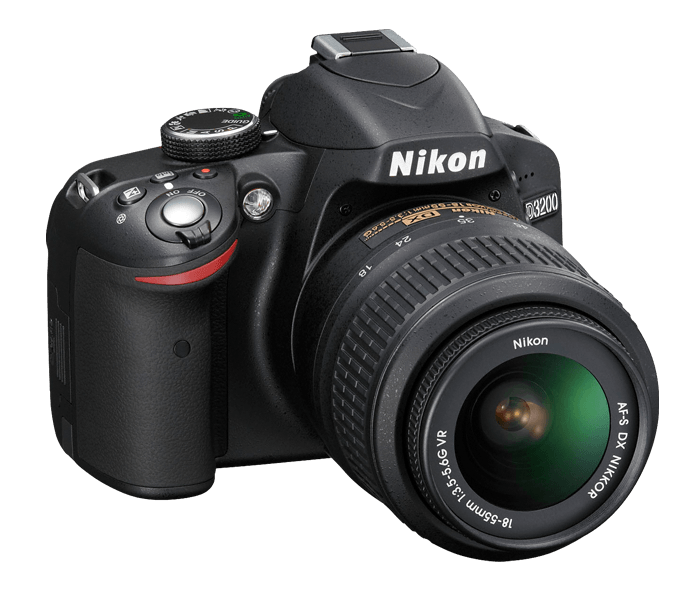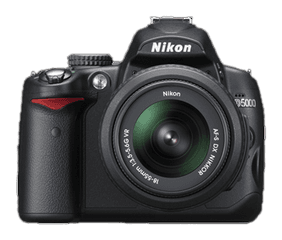Nikon D3200 vs D5000 Comparison
Nikon D3200

Nikon D5000

The Nikon D3200 outperforms the Nikon D5000 with a score of 54/100 compared to 41/100. Both cameras are DSLR models, announced in 2012 and 2009, respectively. They have similar launch prices, with the D3200 at $699 and the D5000 at $730.
The D3200 has a smaller and lighter body, measuring 125 x 96 x 77mm and weighing 505g, while the D5000 measures 127 x 104 x 80mm and weighs 590g. This makes the D3200 more portable and convenient for photographers on the go.
However, the D5000 has its advantages, such as being slightly larger, which could provide better grip and handling for some users.
Ultimately, the Nikon D3200 is the superior camera, offering better overall performance and a more compact design. The Nikon D5000 may still appeal to those who prefer a larger camera body.
Nikon D3200 vs D5000 Overview and Optics
The Nikon D3200 outperforms the Nikon D5000 in optics, with a score of 63/100 compared to the D5000’s 45/100. This 18-point difference is significant as it highlights the superior optical capabilities of the D3200. Both cameras share some common specifications, such as shooting speed (4 fps), sensor type (CMOS), sensor size (APS-C), lens mount (Nikon F DX), and the absence of image stabilization.
The Nikon D3200’s superior optics are primarily due to its higher megapixel count of 24.2, compared to the D5000’s 12.3 megapixels. This allows the D3200 to capture more detail in images, resulting in better image quality. Additionally, the D3200’s processor, Expeed 3, is an upgrade from the D5000’s Expeed processor, enabling faster and more efficient image processing. The D3200 also boasts a higher DXOMARK score for its sensor, at 81 compared to the D5000’s 72, further solidifying its position as the better camera in terms of optics.
On the other hand, the Nikon D5000 does not have any significant advantages in optics over the D3200. Both cameras have the same shooting speed, sensor type, and size, and neither offers image stabilization. This makes the D3200 a clear winner in the optics department.
Given the differences and similarities in specifications, it is evident that the Nikon D3200 surpasses the D5000 in optical performance. With its higher megapixel count, upgraded processor, and better DXOMARK sensor score, the D3200 offers superior image quality and processing capabilities. Meanwhile, the D5000 does not present any notable advantages in optics, making the D3200 the better choice for those prioritizing optical performance.
Nikon D3200 vs D5000 Video Performance
The Nikon D5000 outperforms the Nikon D3200 in terms of video capabilities, scoring 49/100 as opposed to the D3200’s score of 43/100. Despite this difference in scores, both cameras share some common specifications in their video performance.
Both the D3200 and D5000 have the ability to record high-definition video, with the D3200 offering Full HD resolution at 1920 x 1080 pixels, while the D5000 provides Standard HD at 1280 x 720 pixels. The D3200 can record at a higher maximum frame rate of 30fps, compared to the D5000’s 24fps.
The winning camera, Nikon D5000, has the advantage of built-in time-lapse functionality, which allows for creative and dynamic video capture. This feature is absent in the Nikon D3200, making the D5000 a more versatile option for videographers who are interested in time-lapse photography.
On the other hand, the losing camera, Nikon D3200, offers better video resolution and a higher maximum frame rate. This means that the D3200 can capture more detailed and smoother video footage than the D5000. However, it lacks the time-lapse functionality that the D5000 provides.
Taking these factors into account, the Nikon D5000 is the superior choice for those who prioritize time-lapse capabilities and versatility in their video recording. Conversely, the Nikon D3200 may be more suitable for videographers who place greater importance on video resolution and smoother frame rates. Ultimately, the choice between these two cameras will depend on the specific video requirements of the user.
Nikon D3200 vs D5000 Features and Benefits
The Nikon D3200 outperforms the Nikon D5000 with a feature score of 41/100, compared to the latter’s 34/100. Both cameras share some common specifications, including the absence of a touchscreen, flip screen, GPS, WIFI, and Bluetooth. Despite these similarities, the D3200 holds a clear advantage over the D5000 in certain aspects.
The D3200’s 3-inch screen size is larger than the D5000’s 2.7-inch screen, providing a better visual experience when reviewing images and navigating menus. Furthermore, the D3200’s screen resolution of 921,000 dots is significantly higher than the D5000’s 230,000 dots, resulting in sharper image previews and a more detailed display.
While the D5000 does not hold any advantages over the D3200 in terms of features, its lower score could be attributed to its age, as it was released earlier than the D3200. This older model may still appeal to users who prefer a more budget-friendly option or those who are comfortable with its specifications.
Considering the feature scores and specifications, the Nikon D3200 proves to be the superior camera when compared to the Nikon D5000. Its larger screen size and higher resolution provide a more enjoyable user experience. While the D5000 may be a more affordable option, it lacks the advanced features and improved specifications found in the D3200. Therefore, the Nikon D3200 is the better choice for photographers seeking a more feature-rich and user-friendly camera.
Nikon D3200 vs D5000 Storage and Battery
The Nikon D3200 and Nikon D5000 both score 27/100 in storage and battery, showing no clear winner in this category. They have several similarities in this aspect, such as having a single memory card slot and lacking USB charging capabilities. Both cameras accept SD and SDHC memory cards, but the D3200 also supports the newer SDXC cards and is UHS-I compatible.
The D3200 holds a slight advantage in battery life, offering 540 shots per charge compared to the D5000’s 510 shots. This difference, though minor, could be crucial for extended shooting sessions. The D3200 uses the EN-EL14 battery type, while the D5000 uses the EN-EL9a.
On the other hand, the D5000 does not have any features that make its storage or battery superior to the D3200. Therefore, the D3200 has a minor edge in this category, primarily due to its longer battery life and compatibility with newer memory cards. This advantage may be a deciding factor for some photographers when choosing between these two cameras.
Nikon D3200 vs D5000 – Our Verdict
Are you still undecided about which camera is right for you? Have a look at these popular comparisons that feature the Nikon D3200 or the Nikon D5000:
